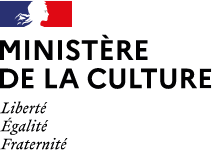For a long time, the presence of animals in art, established since the classic treatises on prehistoric art, was thought to function as a mirror of mankind. The animal is an element consubstantial with art. Its presence, both continuous and multiple, reflects its fundamental place in the cultural imagination of all civilizations. Over three days the Festival will explore the symbolic character of the animal, particularly through visits, workshops, and exhibitions in the château, a former hunting lodge whose visual bestiary invites the gaze of experts and amateurs alike. The notions of animality and humanity will be questioned and confronted in counterpoint with man’s “being” or “becoming” an animal through religious or shamanic rituals, as well as through artistic practices.
Yet the animal is not merely a motif illustrative of human existences and thoughts. Under the impetus of animal studies, which took off starting in the 1970s, the contemporary era has invited us to rethink the place and condition of animals in the broader history of the world from various viewpoints and through interdisciplinary approaches. The festival will also be attentive to this historical turn which has had implications for artists and art historians alike. Numerous conferences and debates will be dedicated to questioning our relationship with animals and the role of art history in a paradigm shift in which many artists have become engaged.




